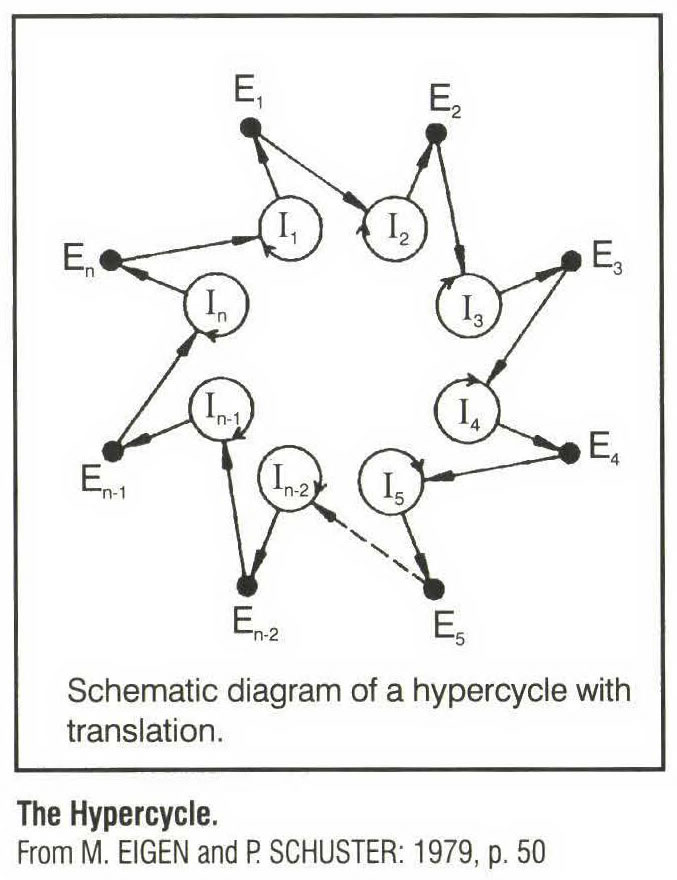HYPERCYCLE 1)2)
← Back
A self-reproductive catalytic reaction cycle made of sequentially interconnected replicative sub-cycles.
In M. EIGEN and P. SCHUSTER words: "A catalytic hypercycle is a system which connects autocatalytic or self-replicative units through a cyclic linkage". More precisely: "… it consists of self-instructive units I; with two-fold catalytic functions. As autocatalysts – or more generally – as catalytic cycles the intermediate Ii are able to instruct their own reproduction and, in addition, provide catalytic support for the reproduction of the subsequent intermediate" (1979, p.5).
And, in more general terms: "The hypercycle is the tool for integrating length-restricted self-replication entities into a new stable order, which is able to evolve coherently. No other kind of organization, such as mere compartmentation, or non-cyclic networks could fulfill simultaneously all three of the following conditions:
- to maintain competition among the wildtype distribution of every self-replicative entity in order to preserve their information; to allow for a coexistence of several (otherwise competitive) entities and their mutant distribution, and
- to unify these entities into a coherently evolving unit, where advantages of one individual can be utilized by all members and where this unit as a whole remains in sharp competition with any unit of alternative composition" (p.VII).
In St. KAUFFMAN's word "… the mutually cyclic connections among template pairs, which are themselves already autocatalytic, constitute a higher order hypercycle, coupling such autocatalytic units" (1993, p.359). While elemental units are subject to possible errors, "the hypercycle as a whole is not" (Ibid).
This suggests an explanation to von NEUMANN's reliable networks out of unreliable components.
The hypercycle could be defined as an "eigen-transitions" process, in von FOERSTER's style, linking the hypercycle with autopoiesis. It also seems to correspond to H. HAKEN's order parameter. The whole process can be represented through the following graph
As observed by E. LASZLO: "The loop may involve a large number of elements, but it ultimately closes in upon itself, forming a remarquably fast and stable reaction cycle" (1992, p.243).
Hypercycles are a very general constructive and reproductive organization model. They obviously open the road to the build-up of complexity at successive evolutive levels.
The global organization of the hypercycle implies necessarily a hierarchical order reflecting an ordered cooperation among mutually replicating elements.

Categories
- 1) General information
- 2) Methodology or model
- 3) Epistemology, ontology and semantics
- 4) Human sciences
- 5) Discipline oriented
Publisher
Bertalanffy Center for the Study of Systems Science(2020).
To cite this page, please use the following information:
Bertalanffy Center for the Study of Systems Science (2020). Title of the entry. In Charles François (Ed.), International Encyclopedia of Systems and Cybernetics (2). Retrieved from www.systemspedia.org/[full/url]
We thank the following partners for making the open access of this volume possible:

